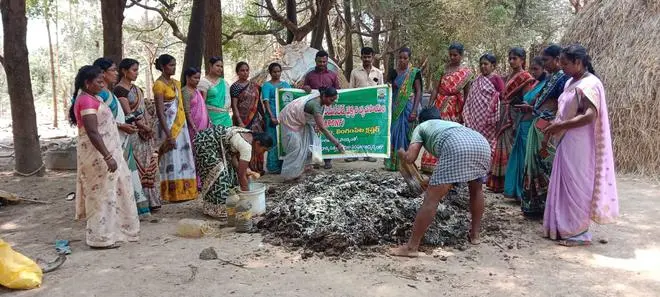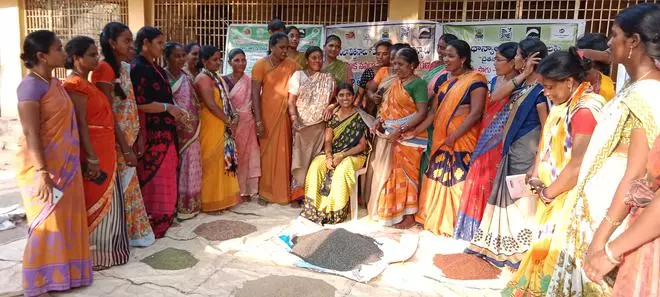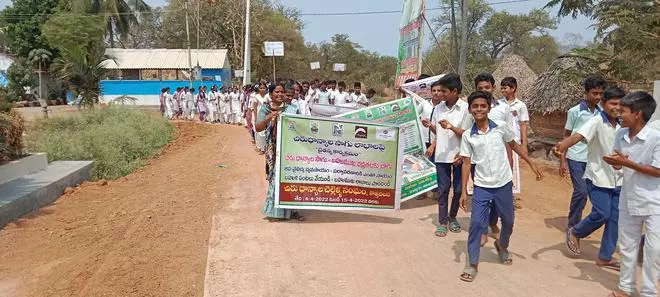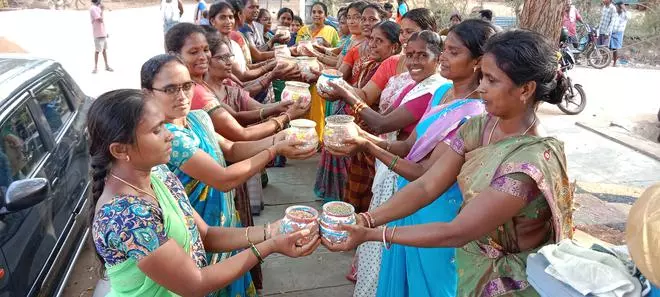What started as a small experiment in 100 acres to promote millet consumption in five remote Andhra Pradesh villages in Vizianagaram district in 2005 has now become a poster boy for millet farming.

From about 150 farmers in 2005-06, the farmers producers organisation (FPO) now has 2,000 farmers, who have just set up a food processing facility to manufacture ready-to-eat and ready-to-cook products.
Millet sisters
After a journey of 18 years, the FPO is now completely a women-led one with an army of 1,000 Millet Sisters (women farmers well-versed with millet farming and promotion) driving the activities. It trained 200 women farmers in entrepreneurship.

After a journey of 18 years, the FPO is now completely a women-led one with an army of 1,000 Millet Sisters
“It has not been an easy journey,” Saraswathi Malluvalasa, CEO of Arogya Millets, says. Saraswathi, who joined NGOs soon after her graduation, toured extensively in villages, said she found millets were off the fields and off the kitchen. “After talking to PV Satheesh of DDS, I’m convinced that we need to do something to bring millets back on the menus of villagers to ensure f\ood and nutritional security. We are distributing millets through an alternative to PDS in some villages,” she said.

“It was tough convincing the farmers initially. They were growing paddy and other cash crops and almost forgot about millets. Though the old farmers remember, they hardly remember the millet farming practices. The seed was not available. Bringing back the millets in the menu too was a tough challenge,” Saraswathi told businessline.
She was here to showcase the model at a national conclave on millets organised by businessline and Nabard recently.
She said she developed the model with the help of Deccan Development Society (DDS), the Nabard and State Government officials over the last 18 years.

“After a series of meetings, I could convince the farmers to grow millets in the pre-kharif months. They were ready because they were not going to miss the crucial kharif season. The DDS agreed to provide financial assistance and seeds,” she said.
“We set up farmers’ clubs under the leadership of women and started off the journey in 2005-06 with 100 acres. The following year, we could add 100 more acres. We gave them seed and other inputs worth ₹500 per acre and they were expected to pay back in kind – ₹1,000 worth grain,” she said.

The farmers’ clubs mandated their members not to use chemical fertilizers and pesticides. “Our focus is on five securities – food security, nutritional security, health security, fodder security, and environmental security. The sixth one – financial security – is a byproduct,” she said.
It was not until 2017-18, the association took a formal shape and was registered as an FPO with the help of the Nabard. After growing enough crops for their household consumption, the association is left with surplus stocks.
“We have been involving government officials in our programmes. This helped in building trust and confidence among the farmers. We have started producing value-added products and supplying them to schools,” she said.
Crop loans
The FPO’s success story convinced banks to give its members ‘millet crop loans’, with loans up to ₹20,000 each.
Talking on her future plans, Saraswati said the production at the millet food processing facility, which received a financial assistance of ₹4.10 crore from the State government, is under pilot runs, producing ready-to-eat and ready-to-cook products. “We are going to begin commercial production and marketing next month. Besides, a number of new FPOs working in millets are visiting us to learn from us. We are showing them around,” Saraswathi said.








Comments
Comments have to be in English, and in full sentences. They cannot be abusive or personal. Please abide by our community guidelines for posting your comments.
We have migrated to a new commenting platform. If you are already a registered user of TheHindu Businessline and logged in, you may continue to engage with our articles. If you do not have an account please register and login to post comments. Users can access their older comments by logging into their accounts on Vuukle.